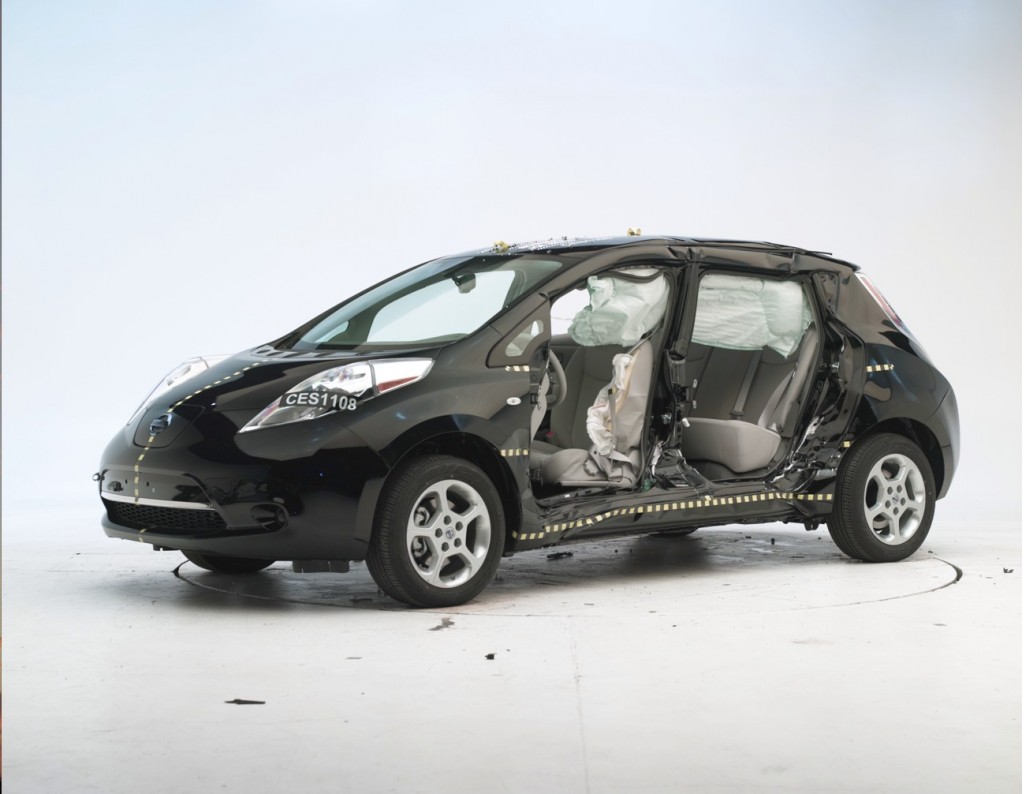
2011 Nissan Leaf in IIHS crash test
Meanwhile, the somewhat more expensive BMW i3 takes a radically different approach to materials and construction; from its carbon-fiber-reinforced plastic body to its aluminum structure, it's a completely different kind of car.
Will Nissan step up with its own new approach to materials and construction, perhaps in a premium electric car? And are carbon-fiber materials something the automaker is considering for the future?
That's one of the questions we asked Nissan's global research and development chief Mitsuhiko Yamashita, in a group interview at the Tokyo Motor Show this past week.
The answer: You won't see carbon fiber in the body or the structure of any Nissan or Infiniti in the near future.

Nissan global research and development chief Mitsuhiko Yamashita
Too expensive and...too durable
“Carbon fiber is a very interesting technology, but I would say that it has two conditions which make it unsuitable for vehicle application,” argued Yamashita. “Number one is it's very expensive; number two is it's too durable."
Yamashita noted that carbon fiber can last more than 30 years.
"We don't need such a material...That means we cannot sell a new car in 30 years,” Yamashita quipped, adding that only if we see a sea-change in how cars are seen, and we start recycling platforms and rebodying them, then he could make an argument for utilizing carbon fiber, which is an extremely durable technology.
Yamashita went on to say that all that makes carbon fiber a good choice for airplanes doesn't apply well to cars.
Costly and difficult in manufacturing, too
Carbon fiber is also very expensive to handle in manufacturing, noted Yamashita.
What will we see instead in future Nissan models? According to Yamashita, the automaker will use more aluminum and more high-strength steel in key structural areas, as well as more plastic pieces in other areas.
“Usually we can reduce weight and improve fuel economy by switching to another metal,” he added.
_________________________________________Nissan provided airfare, lodging, and meals to allow High Gear Media to bring you this first-person report.













